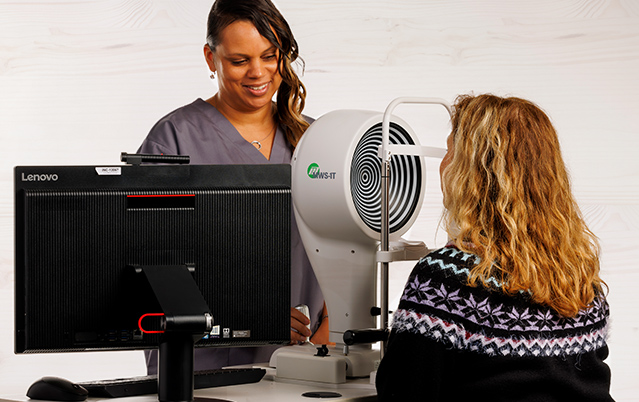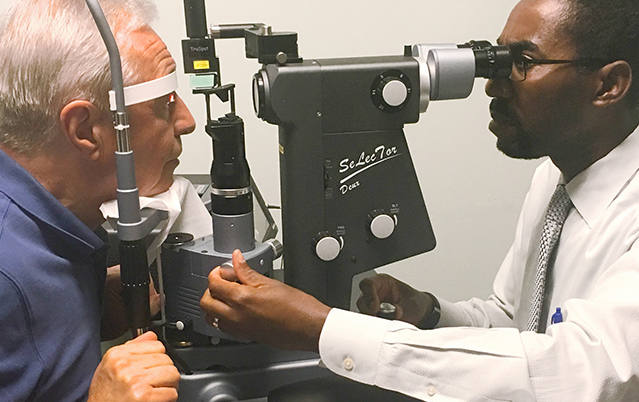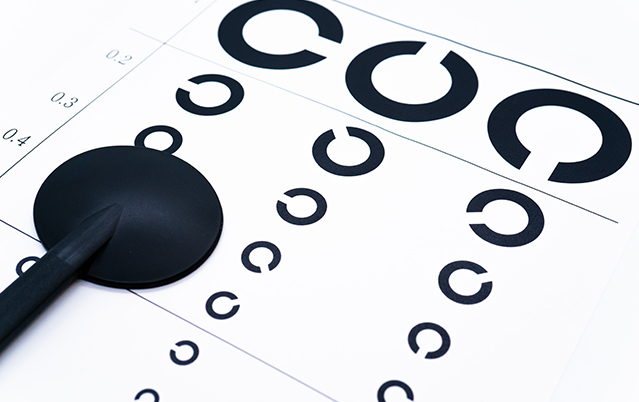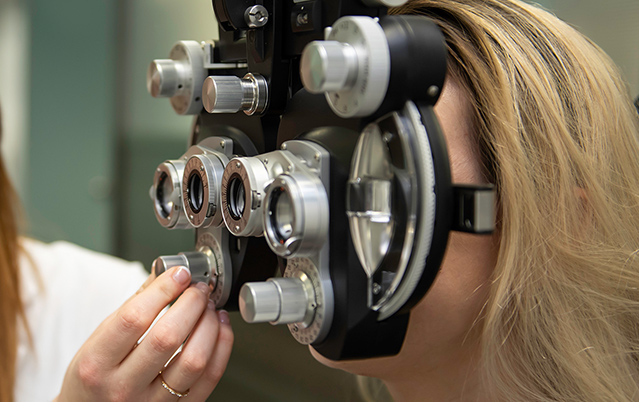Chairs
Unless you are hardcore into interior design and want some cool upholstery color choices, eye exam chairs are pretty boring. However, they are essential to your practice (at least until the Exam Couch 3000 gets released – let’s hope that never happens!). Chairs that simply go up and down are the most economical and recommended if all you do is refract all day. Manual tilt and recline chairs are the next step up and are usually just a couple hundred dollars more. These are the most common chairs I sell due to the price and manufacturer promotions. Most manual tilt/recline models have a lever behind the chair which you can easily pull back or forward on. In my opinion, the easiest and best quality model is the Marco EZ Tilt – it simply takes the push of a button to tilt someone back and forward again.
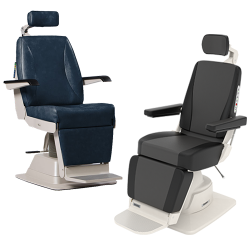
Automatic recline chairs are the luxury model chairs and come with all the bells and whistles. Features include foot pedal controls, additional controls on both sides of the chair itself, and, in some cases, even controls from the instrument stand. Further, many manufacturers such as Marco and Reliance offer a whole list of premier color options for their automatic recline chairs. Automatic recline exam chairs are usually about $2,000 more than the manual recline chairs but are easy and effortless to operate.
One last thing to consider when purchasing exam chairs is their wheelchair accessibility. Make sure to ask your sales rep if a chair will fit on a glide or chair mover. Also, don’t forget about that ADA tax credit (consult with your accountant for more info).
Instrument Stands
If you thought the chairs were boring, stay with me here! When shopping for instrument stands, there are two main questions to be answered:
- Do you need the charging wells for your handheld instruments (ophthalmoscope, retinoscope, transilluminator)?
- Does the stand need to be wheelchair accessible?
Charging wells on your instrument stand only cost an extra $250 or so. In my opinion, they are worth it to have because of their added convenience. Your handheld instruments will always be nearby and charged up.
How can a stand be wheelchair accessible you ask? The phoropter pole arm is extended longer than usual for the wheelchair and the slit lamp arm also goes a little lower to the ground. Also, remember that ADA tax deduction we discussed above! Additionally, I highly recommend that you purchase your chair and stand together from the same manufacturer. It’ll look nicer and you can take advantage of promotional package deals to save some of your budget.
Note that the standard instrument stand typically only comes with two arms: the phoropter arm and the slit lamp arm. “But I love my manual keratometer!” Most models have the option to purchase an additional third arm if you like. Also, if you are strictly a retina practice, you can order the stand without the phoropter arm to save a couple hundred dollars.
Refractors
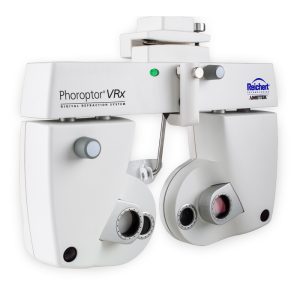
The main question to ask yourself here is, “Do I want digital vs manual?” Being a former practice manager for optometry locations, my practice made the switch in 2014 from manual to digital phoropters. We purchased the Marco TRS system and it greatly increased our patient exam count and reduced exam time. It wasn’t until I actually started selling these units that I realized they can greatly reduce shoulder pain as well. This makes sense if you think about how long your hands and arms are raised for the refraction. Digital refraction with an automated phoropter can also boost your reputation with patients and increase retention. They see the enhanced technology you’re using to get them into the best prescription possible and see you as a step above the others.
One other benefit of auto-phoropters which is quite relevant given the current COVID-19 crisis is that you don’t have to be right in front of the patient during the refraction. I must confess that I often got coughed and sneezed on when I was a technician. With digital phoropters, you can refract from a safe social distance. Telehealth is the way of the future, and auto phoropters provide the connectivity for remote exam solutions.
“But that technology going to cost me,” you say. Remember that you are able to see more patients with an automated refractor. Plus, many eye equipment dealers will take your manual phoropter in as a trade-in deal. That alone could save you up to $2,000 off your purchase. Most of the current promotions also include a free acuity chart as well. There’s another $3,000 in savings.
If you’re not sold on digital refraction and manual is still your preference, you still have some options. You can choose between plus or minus-cylinder, and getting an illuminated model with lighted dials helps with refraction in a darkened setting. I also want to note that Reichert has a patent on the word phoroptor (notice the spelling), so you will often see other companies calling them vision testers, refractors, or phoropters (with an “e”). While I do recommend digital over manual, all I really ask is that everyone move on from Greens!
Slit Lamps
The slit lamp is your main tool when it comes to the eye exam, and there are a few features to consider before purchasing. First is whether you prefer Tower (Haag-Streit) style or Zeiss style. The tower style has the light source at the top of the slit lamp. The Zeiss style (also referred to as “Gooseneck” style) has the light source at the bottom of the slit lamp. I find that preferences essentially just depend on what style you were trained. Really, just the buttons are just in different places.
The second feature to consider is table model (ideally for hospitals, ERs, medical clinics) or unit model. Unit models are the most common type and are mounted on to the slit lamp arm as opposed to a table. If you purchase a table model, keep in mind that the adjustable instrument table usually doesn’t come with the slit lamp.
Next, we must consider slit lamp magnifications. This is usually the main reason why one slit lamp is $5,000 and the other is $10,000. Which you choose is a matter of how much detail you want to be able to see and how many filters you need. Standard slit lamps offer the most commonly used magnifications of 10x and 16x. Higher end models such as the Haag-Streit BQ and Marco M5 slit lamps have 5 mags (6x, 10x, 16x, 25x, and 40x). 5 mag slit lamps also come with more filter options. Additionally, if you’re looking for digital imaging capabilities, such as the Marco ION, you’ll usually have to go with a slit lamp that has more magnifications.
Here are a couple other key things to keep in mind when purchasing a slit lamp:
- Does the tonometer come with the slit lamp? No, it is a separate instrument.
- Does the tonometer mount come with the tonometer? No, this is also separate.
- R900 style tonometers ONLY fit on Tower style slit lamps.
- 870 style tonometers ONLY fit on Zeiss style slit lamps.
For in-depth information about choosing the perfect slit lamp, check out our slit lamp buying guide.
Acuity Charts
Most practices are using digital acuity charts with a remote control. This makes sense as you can mount the chart directly in front of the patient in most cases. If your office has exam room dimensions at 10×8, no need to panic as we can always use a mirror to get to the 20ft distance needed for refraction.
I recommend you ask a lot of questions when considering acuity systems as their features vary per model. Ask about ETDRS and pediatric optotypes like LEA symbols. Are the letters the same all the time or is there any randomization? Some models even offer stereo and contrast testing as added features. The cost difference in acuity charts usually coincides with the features added and the type of PC required.
With so many options on the market (Lombart alone produces 3 different types), it’s important to do the research to make sure you are getting what you need. Also be sure to inquire about warranties.
But wait! Mike, you’re forgetting the projector! Who doesn’t love an old school jam? The thing is, I just can’t really justify them anymore with the digital charts available. The price is the same and there’s no need to worry about screens and slides. Manual models are a dying breed, but if you must have one, please do yourself a favor and get the automated projector.
Most Important: Find a Dealer You Trust
No matter what makes and models of classical lane equipment you prefer, just make sure you choose an equipment dealer you trust. I like my customers to think of me more as their consultant than a sales rep. You should feel comfortable that your dealer is arming you with quality information and options so you can make the best decisions for your practice and your budget.
About Advancing Eyecare
Advancing Eyecare is a partnership of leaders in the eyecare instrumentation marketplace established to offer the best products and service solutions in the ophthalmic equipment industry. Currently comprised of Marco Ophthalmic, Lombart Instrument, Enhanced Medical Services (EMS), Ophthalmic Instruments, Inc. , S4Optik and INNOVA Medical, the combined scope of the organization has the broadest product portfolio, the most knowledgeable people, and the most reliable service in the industry.



